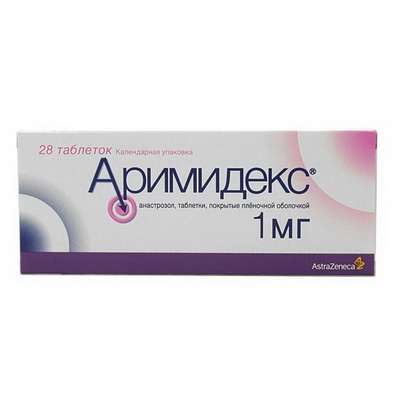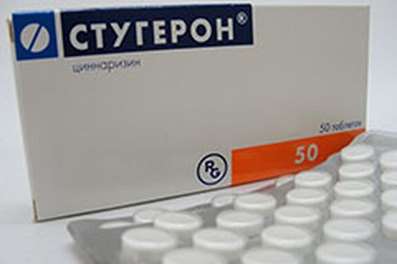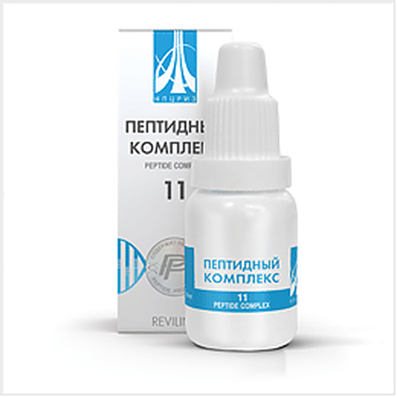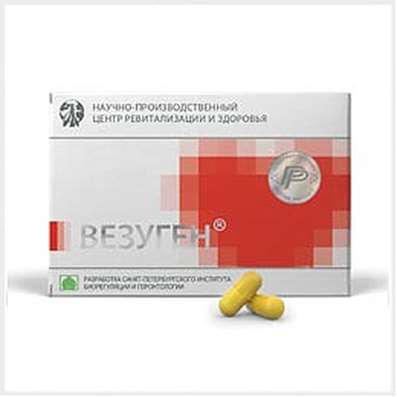Instruction for use: Umeclidinium bromide (Umeclidinii bromidum)
I want this, give me price
chemical name
Diphenyl- [1- (2-phenyl-methoxyethyl) -1-azabicyclo [2.2.2] octan-4-yl] methanol bromide
Pharmacological group
m-Cholinolytics
The nosological classification (ICD-10)
J44 Other chronic obstructive pulmonary disease
Allergic bronchitis, Bronchitis asthma, Asthmatic bronchitis, wheeze bronchitis, Bronchitis is an obstructive, bronchi disease, Shortness of sputum in acute and chronic respiratory diseases, Cough in inflammatory diseases of the lung and bronchus, Reversible airflow obstruction, Reversible obstructive airway disease, Obstructive bronchitis disease, Obstructive lung disease, Obstructive bronchitis, Spastic bronchitis, Chronic lung disease, Chronic nonspecific lung diseases, Chronic obstructive pulmonary disease, Chronic obstructive bronchitis, Chronic obstructive airway disease, Chronic obstructive pulmonary disease, Restrictive lung pathology
Code CAS 869113-09-7
Characteristics
Bronchodilator, long-acting m-anticholinergic.
Umeclidinium bromide is a white powder, slightly soluble in water. Molecular weight 508.5.
Pharmacology
Pharmacological action - bronchodilating, m-holinoliticheskoe, m-holinoliticheskoe.
Pharmacodynamics
Mechanism of action. Umeclidinium is an antagonist of long-acting muscarinic receptors (also called anticholinergics). It is a quinuclidine derivative, which is an antagonist of muscarinic receptors, which acts on muscarinic cholinergic receptors of various subtypes. Umeklidinium has a bronchodilator effect, competitively inhibiting the binding of acetylcholine to muscarinic acetylcholine receptors of the smooth muscles of the respiratory tract. In preclinical studies on in vitro models, this compound demonstrates a slow reversibility of action on human muscarinic receptors subtype m3, and in vivo models, the duration of exposure to drugs after administration directly to the lungs was demonstrated.
Pharmacodynamic effects. In a 24-week, placebo-controlled clinical trial of muclucidinia of 55 μg / dose, an increase in the forced expiratory volume in the first second (FEV1) after the first dose on day 1 was observed, with an increase of 0.07 L after 15 minutes compared with Placebo (p <0.001). The difference between the baseline and the peak FEV1, determined within the first 6 hours after the use of drugs on day 1, was 0.23 liters when using 55 μg / dose of meuklikidinia compared to 0.11 liters when using placebo. The difference between the baseline and the peak FEV1, determined within the first 6 hours after drug use at 24 weeks, was 0.23 liters when using 55 μg / dose meuklikidiniya compared with 0.1 liters when using placebo.
The effect of muclucidinium at a dose of 500 mg on the duration of the QT interval was evaluated in a placebo- and moxifloxacin-controlled study of the QT interval in 103 healthy volunteers. After multiple application of meuklikidiniya in a dose of 500 mg once a day for 10 days, there was no clinically significant effect on the duration of the QT interval (corrected according to the Frederik method).
Pharmacokinetics
Suction. In healthy volunteers, after inhalation of muclacidinia, the mean C max was reached after 5-15 min. The absolute bioavailability of muclipidinia with inhalational administration averaged 13% of the dose, taking into account the very slight absorption of the substance in the oral cavity. After repeated inhalations of meuklikidiniya in 7-10 days, an equilibrium state was achieved with a 1.5-2 fold accumulation. After inhalation of muclipidinia, its systemic exposure was proportional to the dose.
The pharmacokinetics of muclipidinia are linear in nature.
Suction. Plasma levels of meuklikidiniya may not predict a therapeutic effect. After inhalation application of meuklikidiniya in healthy volunteers, C max was achieved within 5-15 minutes. After inhalation, muclucidinium is absorbed mainly from the lungs with a minimal contribution of absorption in the oral cavity. After repeated inhalations of meuklucidinium, the equilibrium state is reached within 14 days with an accumulation of 1.8 times.
Distribution. After intravenous administration of healthy volunteers, the average Vd was 86 liters. The binding to human plasma proteins in vitro averaged 89%.
Metabolism. In vitro studies have shown that muclucidinium is metabolized mainly under the action of the CYP2D6 isoenzyme of the cytochrome P450 system, and is a carrier of the P-glycoprotein (P-gp) carrier. The main way of metabolism of meuklikidiniya is oxidation (hydroxylation, O-dealkylation) followed by conjugation (glucuronation, etc.), leading to the formation of a number of metabolites that have either substantially lower pharmacological activity or unidentified pharmacological activity. Systemic exposure of metabolites is low.
Drug interaction. Umeklidinium is a substrate of the carrier P-gp and isoenzyme CYP2D6. In healthy volunteers, the effect of the P-gp-inhibitor verapamil (240 mg once daily) on the pharmacokinetics of idenklinidium in the equilibrium state was determined. The effect of verapamil on Cmax was not observed. There was an approximately 1.4-fold increase in the mean AUC of muclidinia. The effect of the genotypically slow metabolism of the CYP2D6 isoenzyme on the pharmacokinetics of muclacodynia in the equilibrium state was evaluated in healthy volunteers (normal metabolism of the isoenzyme CYP2D6 and slow metabolism of the isoenzyme CYP2D6). A clinically significant difference in the systemic exposure of meuklikidinia (500 μg) after repeated daily inhalation of doses in individuals with normal and slow metabolism of the CYP2D6 isoenzyme was not observed.
Umeklidinium and isoenzyme CYP2D6 cytochrome P450. Metabolism of in-vitro fertilization is mediated mainly by the CYP2D6 isoenzyme. However, there was no clinically significant difference in the systemic exposure of meuklikidinia (500 μg) (8 times the dose of 62.5 μg approved in the United States) after repeated daily inhalations in individuals with normal metabolism for CYP2D6 (ultrafast, fast and delayed metabolizers) and slow metabolizers for CYP2D6.
Excretion. Plasma clearance of muclipidinia after iv injection was 151 l / h. 192 hours after intravenous administration, about 58% of the dose of a substance labeled with a radioactive isotope (or 73% of the radioactive substance isolated) was excreted by the intestine. 22% of the dose of a substance labeled with a radioactive isotope (27% of the released radioactive substance) was excreted by the kidneys, after 168 hours. The excretion of the drug-bound intestine after iv introduction indicates the excretion of it with bile. 168 hours after the oral administration of the drug in healthy men, the bulk of the radioactive substance was excreted primarily by the intestine (92% of the dose taken by a substance labeled with a radioisotope or 99% of the radioactive substance isolated). With oral administration of kidneys, less than 1% of the dose of the substance (1% of the released radioactive substance) is excreted, indicating very little absorption in this route of administration. After repeated inhalations of meuklikidinia for 10 days, T1 / 2 from the plasma averaged 19 hours, while from 3 to 4% of the unchanged substance was excreted by the kidneys in an equilibrium state.
Excretion. After iv introduction of radiolabeled muclidinium, the mass balance showed that 58% of the radioactivity is determined in the feces and 22% in the urine. Excretion of the intestine associated with the inoculation of the radioactivity after intravenous administration indicates its excretion with bile. After oral ingestion by healthy men, most of the radioactivity was detected in feces (92% of the total dose) and less than 1% of the total dose in urine, which implies a slight oral absorption. Effective T1 / 2 after application once a day is 11 hours.
Special patient groups
Elderly age. Population pharmacokinetic analysis showed the similarity of the pharmacokinetics of muclidinia, defined in patients with COPD in the age group of 65 years and older and in the age group up to 65 years.
Impaired renal function. In the study of patients with impaired renal function of severe degree (Cl creatinine <30 ml / min), no data indicating an increase in the system exposure of muclocidinia (Cmax and AUC) were obtained. There are no signs of a change in binding to proteins in patients with impaired renal function of a serious degree compared to healthy volunteers.
Violation of the function of the liver. In a study of patients with a moderate degree of liver function disorder (Child-Pugh class B), no data were obtained indicating an increase in the systemic exposure of meuklikidinia (Cmax and AUC). There are no signs of a change in protein binding in patients with moderate liver function impairment compared to healthy volunteers. Studies of muclipidinia in patients with impaired hepatic function were not performed.
Other groups of patients. Data from the population analysis of pharmacokinetics showed that correction of the dose of meuklepidinia depending on age, race and sex, the use of inhaled GCS or body weight is not required. In the study of patients with a weak metabolic activity of the CYP2D6 isoenzyme, no data were obtained indicating the clinically significant effect of the genetic polymorphism of the CYP2D6 isoenzyme on the systemic exposure of meuklikidinia.
Special groups of the population. Population pharmacokinetic analysis did not reveal a clinically significant effect of age (from 40 to 93 years), gender (69% of men), use of GCS (48%), body weight (34 to 161 kg) on systemic exposure of meuklikidinia. In addition, there was no evidence of a clinically significant effect of the race.
Indications
Supportive bronchodilator therapy aimed at alleviating the symptoms of chronic obstructive pulmonary disease.
Contraindications
Hypersensitivity, severe allergic reactions to milk protein (see "Precautions"), age to 18 years.
Restrictions on the use
Cardiovascular reactions, such as cardiac arrhythmias (eg, atrial fibrillation and tachycardia), can be observed after application of muscarinic receptor antagonists, incl. Meuklikidiniya. Therefore, it should be used with caution in patients with severe impairment from the CAS, especially with cardiac arrhythmias.
Taking into account the antimuscarinic activity of ukonuclidinia, it should be cautiously prescribed to patients with occlusive glaucoma or urinary retention (see "Precautions").
pregnancy and lactation
Fertility. Data on the effect of meuklikidiniya on human fertility are absent. In pre-clinical studies, the effect of muclipidinia on fertility was not detected.
Pregnancy. Data on the use of muclipidinia in pregnant women are limited. In pre-clinical studies, no direct or indirect adverse effects related to reproductive toxicity have been identified.
The use of muclipidinia in pregnant women is permissible only if the potential benefit to the mother exceeds the possible risk to the fetus.
Breastfeeding period. Data on the isolation of muclipidinia in human milk are absent. The risk to children who are breastfed can not be ruled out.
The decision to abolish or stop breastfeeding should be made depending on the ratio of the benefits of therapy to mother and breastfeeding for the baby.
The action category for fetus by FDA is C.
Adequate and strictly controlled studies of the use of muclacodynia in pregnant women have not been conducted. Use in pregnancy is possible only if the expected effect of therapy exceeds the potential risk to the fetus.
It is not known whether meclucidinium is excreted into the milk of women. Given that many drugs enter the milk, caution should be exercised when using meuklikidiniya in lactating women. Since there is no evidence of controlled clinical trials on the use of muclucidinia in lactating women, a decision should be made to stop breastfeeding or to refuse treatment with muclipidinia, taking into account the importance of drugs for the mother.
The introduction of muclipidinia to rats during lactation at doses approximately 25 times that of MPD led to a quantitatively determined level of muclacodynia in 2 young, which may indicate penetration into milk.
Side effects
The safety profile of Muclucidinia is based on data from studies involving approximately 1700 patients with COPD who received doses of 55 mcg or more for a period of up to one year. Of these, approximately 600 patients received the recommended dose of 55 μg once a day.
The adverse reactions identified in the four efficacy studies and the long-term safety study (involving approximately 1,400 patients receiving muclucidinium) are presented below.
Undesirable reactions are listed in accordance with the damage to organs and organ systems and frequency of occurrence. Frequency of occurrence is defined as follows: very often (≥1 / 10); Often (≥1 / 100 and <1/10); Infrequently (≥1 / 1000 and <1/100); Rarely (≥1 / 10000 and <1/1000); Very rarely (<1/10000, including individual cases).
Frequency of occurrence of undesirable reactions
Infectious and parasitic diseases: often - urinary tract infections, sinusitis, nasopharyngitis, upper respiratory tract infections.
From the nervous system: often - a headache.
From the heart: often - tachycardia; Infrequently - atrial fibrillation, supraventricular tachycardia.
From the respiratory system, chest and mediastinum: often - cough.
From the digestive tract: infrequent - constipation, dry mouth.
From the skin and subcutaneous tissues: infrequent - rash.
Experience in clinical trials
Because clinical trials are conducted under different conditions, the incidence of adverse reactions observed in a clinical study of drugs can not be directly compared with the incidence of side effects in other clinical trials and may not reflect the frequency of these effects in clinical practice.
In 8 clinical trials, a total of 1,663 patients with COPD (mean age 62.7 years, 89% of the Caucasoid race, 65% of men) received at least 1 dose of inhalation mildly-62.5 or 125 μg. In 4 randomized, double-blind, placebo-controlled or active-controlled clinical trials of efficacy, 1185 people received muclidinium for up to 24 weeks, 487 of whom received a recommended dose of 62.5 μg in the United States. In a 12-month, randomized, double-blind, placebo-controlled, long-term safety study, 227 people received muclucidinium at a dose of 125 μg for 52 weeks.
The following are two placebo-controlled efficacy trials (one 12-week and one 24-week trial) in patients with COPD. Side effects were reported in patients who used meuklikidiniy (n = 487) or placebo (n = 348), noted in more than 1% of patients and exceeding the frequency of placebo. Next to the name, the incidence of this side effect is indicated, in parentheses - similar data in the placebo group.
Infectious and parasitic diseases: nasopharyngitis - 8% (7%), upper respiratory tract infection - 5% (4%), pharyngitis - 1% (<1%), upper respiratory tract infection 1% (<1%).
Precautions
Umeklidinium is intended for use as a maintenance therapy for COPD. Do not use this medicine to stop acute symptoms, i.e. As an emergency aid for an acute episode of bronchospasm. To stop acute symptoms, use a short-acting bronchodilator. An increase in the frequency of using short-acting bronchodilators to relieve symptoms indicates a worsening of control over the disease, in which case the patient needs a doctor's consultation.
As with other types of inhalation therapy, the use of muclucidinia can cause paradoxical bronchospasm, which can be life threatening. With the development of paradoxical bronchospasm it is necessary to stop the use of meuklikidiniya, and if necessary, alternative therapy can be prescribed.
Hypersensitivity. After the use of meuklikidiniya possible development of hypersensitivity reactions. There are reports of anaphylactic reactions in patients with severe allergic reactions after inhalation of other powdered products containing lactose; So patients with severe allergies to milk protein should not use meuklikidiniy (see "Contraindications").
Deterioration of the course of closed-angle glaucoma. Umeklidinia should be used with caution in patients with closed-angle glaucoma. It is necessary to be attentive to the appearance of signs and symptoms of acute closed-angle glaucoma (for example, pain or discomfort of the eyes, blurred vision, visual halos or color images associated with reddening of the eyes, conjunctival stasis and corneal edema). Patients should be instructed to immediately seek medical attention if any of these signs or symptoms develop.
Urinary retention (worsening). Umeklidinium should be used with caution in patients with a delay in urine. It is necessary to be attentive to the appearance of signs and symptoms of urinary retention (for example, difficulty urinating, painful urination), especially in patients with prostatic hyperplasia or infravesical obstruction. Patients should be instructed to immediately seek medical attention if any of these signs or symptoms develop.
Umeklidinium is intended for maintenance treatment of patients with COPD. Due to the fact that patients in the general population of COPD are significantly older than 40, the prescription of drugs for patients under 40 years of age requires spirometric confirmation of the diagnosis of COPD.
Special patient groups
Childhood. Umeklidiniy does not apply to the treatment of patients under the age of 18, taking into account the indications for his appointment.
Elderly age. Patients over 65 years of age do not need dose adjustment (see Pharmacology).
Elderly age. Based on the available data, adjusting the dose of meiklucidinia in geriatric practice is not necessary, but one can not exclude the greater sensitivity of some older people.
Clinical tests of mucyclidinia included 810 people aged 65 years and older, 183 of them were 75 years of age or older. There was no difference in the safety and efficacy of muclipidinia in these patients compared to younger patients; Other clinical reports also did not reveal differences in response to treatment of elderly and young adults.
Impaired renal function. Patients with impaired renal function are not required to adjust the dose (see Pharmacology).
Violation of the function of the liver. Patients with a mild or moderate degree of liver dysfunction are not required to adjust the dose. Studies on the use of muclipidinia in patients with severe liver dysfunction were not performed (see Pharmacology).
Influence on ability to drive vehicles, mechanisms. Studies on the study of the influence of meuklikidiniya on the ability to drive vehicles and work with mechanisms were not conducted. There were no undesirable reactions associated with taking idiotics, which could affect the ability to perform tasks that require decision making, motor or cognitive skills.

 Cart
Cart





